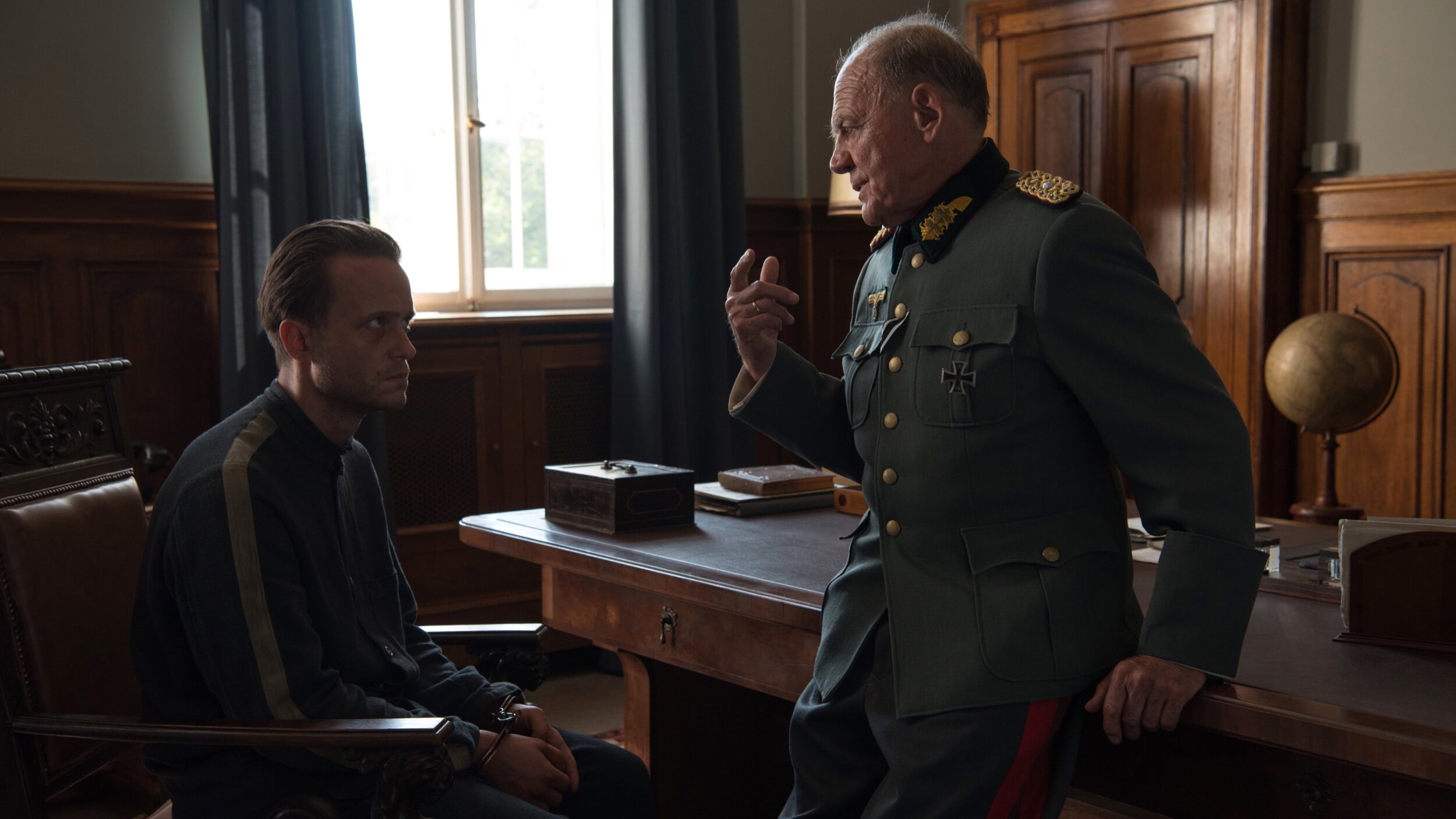What Terrence Malick Looks For in A Hidden Life
A HIDDEN LIFE - 20th Century Fox
Terrence Malick is often thought of as a recluse. Over his nearly fifty-year career, he spent twenty of them without releasing a single feature. During this time, it was rare even to find a public photograph of him.
However, while his evasiveness suggests the habits of a social hermit, they could also be seen as more likened with that of an explorer, always looking somewhere else in pursuit of a new perspective. Take, for instance, Malick’s most notorious work: The Tree of Life. Here, he travels all the way back to the conception of the universe, jumping between various points of prehistory as displayed through breathtaking, naturally lit photography. All of this is juxtaposed with the perspective of a child living in a 1950s suburbia that perhaps mirrors Malick’s own life. Maybe he’s seeking answers; in the most literal and jaded sense, maybe he is just staring at the sun.
A HIDDEN LIFE - 20th Century Fox
Still, whatever Malick is searching for in life and in cinema, he does so honestly, which is why prior to seeing his latest effort— A Hidden Life — it is fascinating to see why he has chosen to make it at this point in time and whether he is doing so with an agenda or simply because he is still looking for answers he knows he will never find.
This is Malick’s first released “traditional narrative” film since The New World almost fifteen years ago. At the time of this writing, it is also the time of year when studios rally behind their own “definitive movie of our time” in hopes of boosting box office receipts. A tale such as A Hidden Life — in which a good-hearted, Austrian peasant farmer fearlessly faces arrest, imprisonment and, ultimately, execution for refusing to enlist in Hitler’s army on account of his religious values — would fit all too neatly into this category of “Oscar bait.” However, of course, it does not, because it is a movie made by Terrence Malick.
Despite working a with a defined story structure, Malick’s late-period formalist tendencies are never compromised nor function as crutches for his vision. Amidst the historical backdrop of the Second World War, the heart of A Hidden Life is a love story, beginning with the protagonist Franz (August Diehl) courting his wife Franziska (Valerie Pachner) and ending with a final embrace between the two as the inevitable approaches. Their dialogue throughout is achieved almost entirely in the form of written letters presented through voiceover, with each conveying their fears and desires, attempting to encourage the other to stay strong in the chaos of the war.
A HIDDEN LIFE - 20th Century Fox
Clocking in at around three hours, the pace of A Hidden Life is nonexistent, deliberately trudging from one depressing vignette to the next as stubbornly as its main character. Malick and his cinematographer Jörg Widmer admirably retain passive objectivity in their framing, avoiding naked attempts at manipulation. Nature is treated with unwavering majesty that makes the seismic events of World War II seem contained in comparison. The prison cells that Franz inhabits are filmed in wide scope, as if the walls are distorting, refusing to bend to the will and force of the Earth. The only discernable points of view found in the film are the in leads’ disembodied voices, but it is in those perspectives where the narrative’s vitality lies.
Most of A Hidden Life concerns the pursuit of divine meaning through testing acts of defiance and determining whether or not faith alone is enough to justify resistance at all costs. Malick, of course, reaches no obvious conclusions, as just about everything in the film is muted and understated. Regardless, he thoughtfully navigates shades of grey while managing to avoid slipping into empty nihilistic posturing. Franz sees his actions as the only option to seize his God-given freedom in a land governed by hate and oppression. Meanwhile, as Franz is incarcerated for his disobedience, Franziska inherits Franz’s previous farming duties while raising three children as the village exhibits active hostility towards her and her family. Franz himself regularly expresses self-doubt in his letters, as his captors remind him repeatedly of the futility of his one-man army resistance. Only Franziska is concerned with his fate; to Franz, after all, his tale begins and ends with her.
There is a quote from David Mitchell’s 2004 novel Cloud Atlas in which reformed abolitionist Adam Ewing, having been told that his life was worth “no more than one drop in a limitless ocean,” responds saying, “What is any ocean but a multitude of drops?” A Hidden Life conveys a similar idea, in that, regardless of what happens to Franz, it matters that Franziska can pass down his story. A life, no matter how hidden, is part of a world waiting to be explored, and the stories of those hidden lives exist as the fabric of the universe’s tapestry. Not only is A Hidden Life Terrence Malick’s long-awaited return to narrative storytelling, but it is also a story about the nature of narrative, told with a refreshing sense of rediscovery.




